13 Effective Anger Management Activities for Kids, Children and Teens
Helping kids handle anger is essential for their emotional development and well-being.
In the U.S., childhood anger and behavioral issues are increasingly common; about 7% of children between ages 3 and 17 experience regular episodes of anger, irritability, or temper outbursts.
Without guidance, these emotions can lead to ongoing difficulties, affecting friendships, school life, and overall self-esteem.
Learning to manage these feelings early on is crucial to building positive relationships and developing a strong emotional foundation for kids and teens. There are many simple yet impactful anger activities for kids.
These activities teach children how to understand and express anger in safe, healthy ways, whether through fun exercises, calming techniques, or creative outlets like drawing and storytelling.
For parents, teachers, and caregivers, having a set of age-appropriate strategies ready can make all the difference when kids encounter frustrating or upsetting situations.
This blog will explore effective anger management activities for kids, children, and teens.
These methods encourage emotional control and help young ones build resilience, making navigating emotions constructively easier.
13 Effective Anger Management Activities for Kids
Anger management activities are essential for children, helping them to process and express their emotions healthily.
These activities provide them with constructive outlets and coping skills for dealing with anger and frustration.
When kids engage in anger management exercises, they gain insights into their emotions, learning how to identify and manage anger before it escalates.
By learning through practice, children better understand what triggers their anger and develop a personal toolkit of coping mechanisms that can be used in real-life situations.
Here are 13 effective activities that can help manage anger issues among kids and teenagers:
1. Anger Iceberg Activity
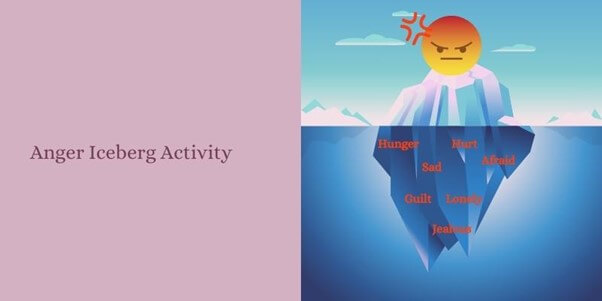
The Anger Iceberg Activity is a great way to help children identify the hidden feelings beneath their anger.
Like an iceberg, anger often hides underlying emotions such as sadness, fear, embarrassment, or frustration. This activity guides children to look deeper and recognize these “below the surface” emotions.
- Start by showing an image of an iceberg with a small part above water (visible anger) and a larger part below water (hidden feelings).
- Children are then invited to color or draw their own iceberg, labeling the top portion with what others might see (e.g., “yelling,” “clenched fists”) and the submerged part with emotions they feel but may not show, like “hurt,” “disappointment,” or “confusion.”
- This visual exercise encourages kids to identify and label their feelings underneath the anger, building self-awareness.
- After completing the iceberg, they can discuss with an adult or peer how they felt this way and respond.
- This conversation helps kids understand that anger often responds to other emotions and that acknowledging them can help them communicate more effectively.
Through the Anger Iceberg Activity, children learn that it’s okay to feel vulnerable emotions and that addressing these feelings is a healthier and more productive way to cope with anger.
By developing this emotional insight, children are more likely to express themselves calmly in difficult situations.
2. Anger Volcano Activity
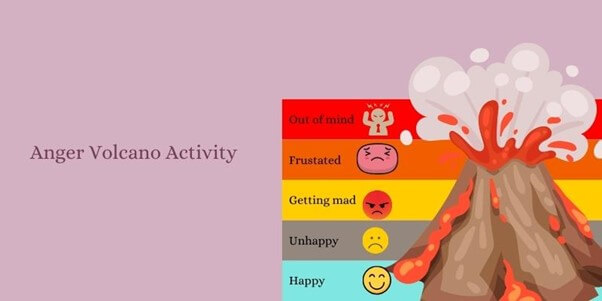
The Anger Volcano Activity provides a powerful, hands-on way for children to visualize the build-up of anger and its potential impact if left unchecked.
- This activity involves creating a volcano model with simple materials like baking soda and vinegar to simulate uncontrolled anger’s “explosive” nature.
- Explain that anger, like a volcano, can gradually build up and eventually “erupt” if we don’t find ways to release it safely.
- Have the child create their volcano using a small container, clay or modeling dough, baking soda, and vinegar.
- As they add ingredients, explain that each spoonful of baking soda represents a stressor or something that upsets them, like a disagreement with a friend or feeling misunderstood. When ready, pour vinegar into the volcano to simulate an “eruption.”
- The eruption symbolizes what happens when anger builds up too much—it spills over and can cause harm or distress.
- Following the eruption, discuss ways they could have prevented the volcano from overflowing, like talking about their feelings early or finding a relaxing activity.
This practical demonstration helps children recognize anger before it explodes and introduces calming strategies like deep breathing, counting to ten, or talking to an adult.
By relating the intensity of an anger “eruption” to the power of a volcano, kids can better understand the need for regular emotional “release valves” to maintain calm.
The Anger Volcano Activity is engaging and provides a memorable visual. It teaches kids that anger is natural but must be managed constructively.
3. Relaxation Techniques
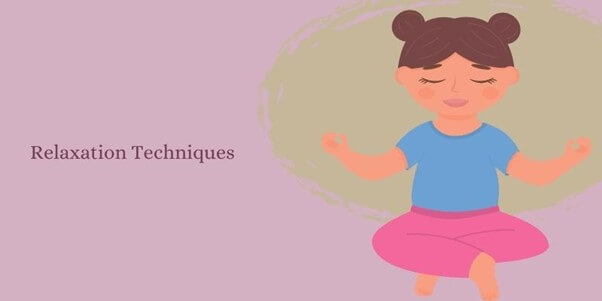
Relaxation techniques are foundational in anger management for kids, helping them calm down, focus, and process their feelings more effectively.
These techniques provide children with ways to slow down their body’s reaction to anger, making it easier to think clearly rather than act out.
- Common relaxation techniques include deep breathing, progressive muscle relaxation, and visualization, which are easy for kids to learn and practice regularly.
- One of the simplest methods is deep breathing, where kids are encouraged to take slow, deep breaths to reduce heart rate and release tension.
- For example, children can imagine filling a balloon with air in their stomachs as they breathe deeply and slowly releasing the air as they exhale.
- Another effective technique is progressive muscle relaxation, which involves tensing and relaxing different muscle groups, from the toes up to the shoulders, helping them recognize and let go of physical tension.
- Visualization is another popular approach; kids can close their eyes and picture themselves in a calming place, like a beach or a park, which distracts them from anger and introduces calm.
Relaxation techniques are helpful temporarily and can become part of a regular routine, making children more resilient.
Practicing these techniques daily can help children recall them during anger-inducing moments. Introducing these activities in a calm environment, with guidance from a parent or teacher, will ensure kids are comfortable using these skills when needed.
4. The TIPP Technique
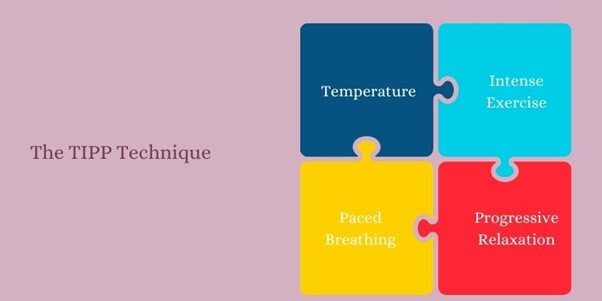
The TIPP Technique is a practical strategy used in dialectical behavior therapy (DBT) to help individuals, including children, manage intense emotions like anger.
TIPP stands for Temperature, Intense Exercise, Paced Breathing, and Progressive Relaxation.
This structured approach addresses physical and emotional reactions to anger, helping children regain control and calm down effectively.
- Temperature’s first step involves cooling the body down, which naturally reduces physical signs of anger.
- Splashing cold water on the face or holding a cold compress can activate the body’s “dive response,” slowing down the heart rate and calming the nervous system.
- The second step, Intense Exercise, involves engaging in physical activities like jumping jacks or a brisk walk to release pent-up energy. This is especially effective for kids, as movement helps them manage and release physical tension.
- Paced Breathing comes next, where kids focus on breathing slowly and evenly. Practicing a rhythm, like inhaling for four counts and exhaling for six, encourages a sense of calm and control.
- Finally, Progressive Relaxation involves tensing and relaxing muscles in sequence. For instance, they might clench their fists tightly and then release, which helps them recognize and ease physical tension related to anger.
The TIPP Technique’s structured steps make it easy to remember and follow, making it a valuable tool that kids can use independently.
By practicing TIPP during calm moments, children learn to associate each step with feelings of relaxation, making it more natural to use the technique when angry.
5. The STOPP Technique
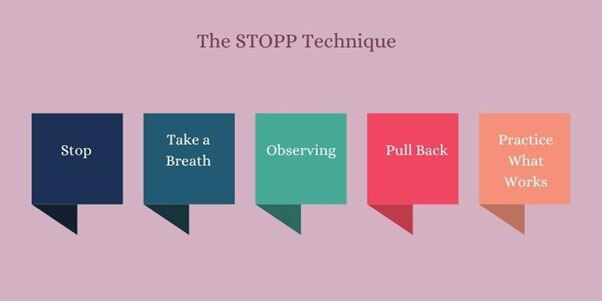
The STOPP Technique is a cognitive-behavioral approach that helps kids pause and rethink their actions when angry.
Each letter in STOPP stands for a step in the process: Stop, Take a Breath, Observe, Pull Back, and Practice What Works.
This method encourages kids to step back from their initial anger and make a more thoughtful choice.
- The first step, Stop, is a simple pause. It encourages children to physically stop what they’re doing, whether yelling, arguing, or clenching their fists. This gives them a moment to reset.
- Next, Take a Breath involves breathing deeply to reduce physical tension, signaling the body to calm down. Children can slow down their heart rate by focusing on their breath, which naturally eases anger.
- The third step is observing, encouraging kids to notice what they’re feeling, thinking, and experiencing in the moment. They might think about what specifically triggered their anger, how their body feels, and what thoughts run through their mind.
- Pull Back is about taking a mental step back from their angry thoughts and recognizing that emotions don’t have to dictate actions. Children are encouraged to ask themselves, “Will this matter tomorrow?” or “What would a friend suggest I do?”
- The final step, Practice What Works, helps children choose a productive way to deal with their anger, like talking it out, doing a calming activity, or taking a break.
Regularly practicing the STOPP Technique helps kids become familiar with each step, making it easier for them to use it instinctively when they’re angry.
It provides a structured process that children can rely on to slow down and make positive choices, leading to better emotional control and improved interactions.
6. Deep Breathing Exercises
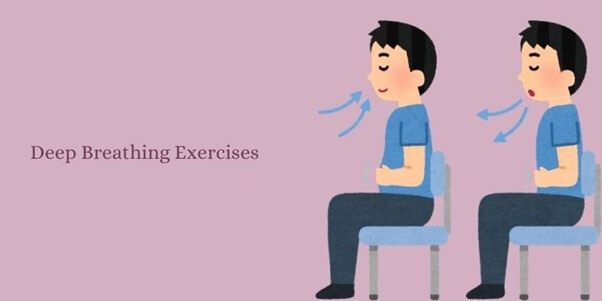
Deep breathing exercises are highly effective anger management tools for kids, helping them quickly calm down and feel more in control.
Anger often triggers a fight-or-flight response, causing rapid, shallow breathing, increased heart rate, and muscle tension.
Deep breathing exercises help counter these physical symptoms by stimulating the body’s relaxation response.
For children who may struggle to express or even recognize their emotions, these exercises provide a simple, accessible way to manage anger and reduce anxiety.
One basic approach is belly breathing.
- Kids are encouraged to sit or lie down, placing one hand on their belly and one on their chest.
- As they breathe in slowly through their nose, they focus on filling their belly with air (not their chest), expanding it like a balloon.
- After holding their breath for a second, they exhale slowly through their mouth. Slowing and deepening the breath signals the body that it’s safe, gradually easing the anger response.
- For added engagement, parents or teachers can introduce visualizations, like imagining blowing up a balloon or smelling a flower, which makes the exercise more fun and memorable for kids.
Box breathing is another effective technique.
- Children are guided to breathe in for four counts, hold their breath for four, exhale for four, and pause again for four counts.
- This method helps children maintain focus and feel more grounded, easing both emotional and physical tension.
- Practicing these exercises regularly allows children to build resilience over time, making it easier for them to recall and use these techniques in anger-inducing situations.
For maximum effectiveness, caregivers or teachers can practice deep breathing with kids during calm moments, reinforcing it as a reliable and comfortable technique.
7. Art Therapy

Art therapy is a creative and therapeutic approach that allows kids to express and process their emotions, including anger, through artistic activities like drawing, painting, or sculpting.
Art provides a non-verbal outlet for children who may not have the vocabulary to articulate complex feelings, making it easier for them to explore and understand their emotions.
When kids engage in art therapy, they get a chance to release anger in a controlled and safe way and learn constructive methods for coping with their feelings.
A common activity in art therapy is the anger monster.
- Kids are invited to draw or paint their anger like a creature. This approach externalizes the anger, making it something they can visualize and negotiate with.
- By personifying anger, children can better understand that it’s a separate part of their experience rather than an uncontrollable part of their identity.
- Other activities, like coloring mandalas or creating mood wheels, encourage kids to explore a range of emotions, helping them identify and differentiate between them.
- As kids work through the art process, they gain a sense of control and accomplishment, which can improve self-esteem and emotional resilience.
Art therapy is also a way to help kids relax physically. When focused on a creative task, their muscles, and breathing tend to relax, mimicking a meditative state. This relaxation can reduce stress hormones and diminish the physical symptoms associated with anger.
8. Role-Playing Scenarios
Role-playing scenarios offer a hands-on approach to anger management, allowing kids to practice handling difficult situations in a safe and controlled environment.
This technique is especially useful for children who struggle with social conflicts, as it helps them develop empathy, perspective-taking, and effective communication skills.
By acting out different scenarios, children learn how to respond to frustration, negotiate with others, and manage their reactions constructively.
- A common role-playing activity involves imagining common anger-inducing situations — like being left out of a game or feeling misunderstood by a friend.
- A child and an adult, or a small group, can act out the situation, with each participant taking turns expressing their feelings and trying out different responses. This exercise gives children the chance to experience different ways of handling anger.
- They can explore both positive and negative reactions, discussing the potential outcomes of each choice. For example, instead of yelling or storming off, they might practice using “I feel” statements, like “I feel upset because…” to communicate their feelings.
- Role-playing also includes reverse roles, where the child plays the part of a friend or family member. This helps them see the other person’s perspective, promoting empathy and reducing anger’s intensity.
- In this way, role-playing helps children understand that their actions affect others, which can motivate behavior change.
For maximum benefit, caregivers, counselors, or therapists should encourage role-playing in a supportive, non-judgmental way, ensuring the child feels comfortable and open to exploring different approaches to managing anger.
9. Creating a Calm Down Box
A Calm Down Box is a personalized toolkit filled with items that help children manage their emotions and feel grounded when anger arises.
This approach is especially effective for kids, providing them with tangible, comforting items to calm down and creating a positive coping mechanism they can control.
Building a Calm Down Box can also be a collaborative and creative process, helping children feel more engaged in their emotional well-being.
- To make a Calm Down Box, gather sensory items and objects that help the child relax. These can include stress balls, putty, fidget toys, soft fabric, or feathers to provide a soothing touch.
- Items like bubbles or a pinwheel can encourage deep breathing, while a small sand timer or snow globe can serve as calming visual aids.
- For auditory comfort, include earbuds with a playlist of calming music or nature sounds. Some children also find grounding techniques helpful, so a list of breathing exercises or a small notebook with prompts for counting their breaths can be added.
- Personalizing the box with the child’s input is essential. Encourage them to select items that make them feel secure or help distract them from angry feelings.
- You can also add an “emotion journal” or drawing paper so they have an outlet to express their feelings visually or in writing.
- Including positive affirmation cards, like “I am in control of my feelings” or “I can choose to calm down,” helps reinforce a sense of empowerment and self-regulation.
When children learn to turn to their Calm-down Box in moments of anger, they develop a habit of choosing positive actions, which reinforces healthy coping mechanisms over time.
10. Emotion Wheel Creation
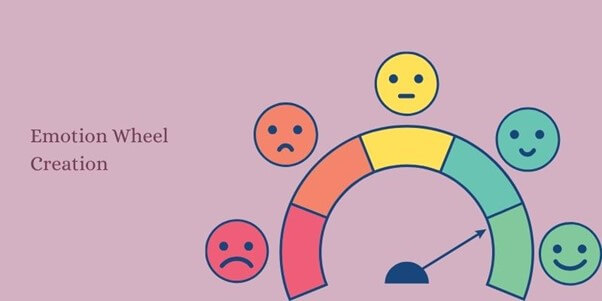
An Emotion Wheel is a visual tool that helps children identify and categorize their emotions, especially anger, in a way that promotes self-awareness and emotional intelligence.
Often, children don’t recognize the full range of feelings they may experience and struggle to articulate what they feel in anger-inducing situations.
The Emotion Wheel provides them with language to describe their feelings, making it easier to manage intense emotions.
Creating an Emotion Wheel can be a fun and interactive project.
- Start by drawing a large circle on paper or cardboard and dividing it into sections like a pie chart. In each section, write or illustrate a different emotion, including common ones like “angry,” “sad,” “scared,” and “happy.”
- These can be further subdivided to include more specific emotions, such as “frustrated,” “anxious,” or “excited.”
- For younger children, color-coding the emotions — for example, red for anger, blue for sadness, and yellow for happiness — can make the wheel more engaging and easier to use.
- Once the wheel is complete, teach the child how to use it by guiding them to point to the emotion they’re feeling during moments of anger or frustration.
- Encourage them to start at the center of the wheel with a broad emotion, like anger, and then narrow it down to a more specific feeling on the outer edges.
- This helps them articulate the underlying causes of their anger, which can help discuss and address the issue’s root.
Using an Emotion Wheel helps children build emotional literacy and provides a structured way to explore their feelings.
Over time, they’ll gain greater awareness of their emotions and develop healthier ways to express and manage them, which can significantly reduce the intensity of their anger.
11. Draw a Picture
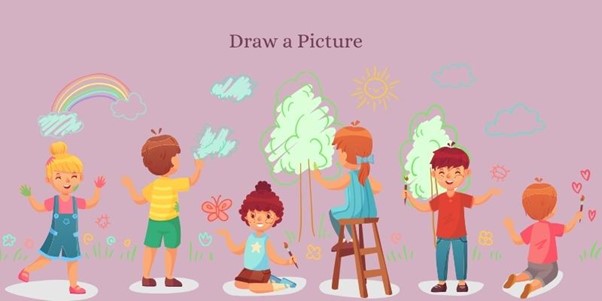
Drawing is a simple yet powerful activity that allows children to release and process their emotions without needing to verbalize them.
For many children, expressing anger or frustration verbally can be challenging or intimidating.
Drawing gives them a safe space to explore their feelings and can act as a visual form of self-expression and emotional release.
When a child feels angry, encourage them to draw a picture representing their emotions.
It could be as straightforward as scribbling with intense or chaotic colors, or they might choose to draw something that symbolizes their anger, like a storm, fire, or an erupting volcano.
This visual form of expression allows the child to channel their feelings into something creative and tangible, offering them a sense of control over their emotions.
Drawing as an anger management activity also promotes relaxation. The physical act of creating art — holding a crayon or brush, focusing on shapes and colors — can calm the body and mind.
After they finish, children often feel more relaxed and ready to talk about the emotions that made them angry.
This activity reinforces that expressing feelings is safe and can even be enjoyable, equipping children with a valuable tool for handling intense emotions in a healthy way.
12. Anger Charades
Anger Charades is a playful, interactive game that helps children recognize and express their feelings safely and nonverbally.
Unlike traditional charades, which focus on acting out common words or phrases, Anger Charades centers on emotions and body language associated with different levels of anger.
By acting out emotions, kids learn to identify their own emotional states and understand how anger can vary in intensity.
- To play, start by creating a set of cards that depict different anger-related emotions and scenarios, ranging from mild frustration to intense anger.
- Examples might include “annoyed because someone took your toy,” “frustrated waiting in line,” “angry because of a broken favorite item,” or “furious after losing a game.”
- Explain to the children that they should act out the scenario and emotion on each card without using words, allowing their body language, facial expressions, and gestures to communicate their feelings.
- The other players then guess the emotion or scenario, encouraging everyone to pay close attention to the different physical expressions of anger.
- After each round, take a moment to discuss the acted-out emotion, asking questions like, “What did you notice about their body language?” or “When have you felt that way?“
- This conversation deepens kids’ understanding of anger and allows them to share personal experiences in a relaxed setting.
Anger Charades provides a fun, low-pressure way for children to explore emotions while teaching them to recognize anger’s different forms. Additionally, it helps kids practice empathy as they observe and interpret others’ feelings.
13. Identifying Levels of Anger
Identifying Levels of Anger is a valuable activity that teaches children to recognize and categorize their anger based on intensity.
Anger can range from mild irritation to intense rage, and understanding this range helps children develop better self-awareness and control.
This exercise is particularly beneficial because it allows kids to recognize early signs of anger and take steps to manage it before it escalates.
- To introduce this activity, start by explaining the concept of anger “levels” or a “scale” of emotions.
- For example, use a 1-to-5 scale, where level 1 represents mild annoyance (such as feeling bothered by a small inconvenience), and level 5 represents extreme anger or rage (like feeling furious after being deeply hurt).
- Each level should correspond with specific physical sensations or behaviors the child may experience, such as clenched fists, a racing heart, or feelings of heat.
- Next, encourage children to reflect on how they feel at each anger level and come up with personal examples for each one.
- For instance, a child might say, “At level 1, I feel annoyed when my sibling teases me,” or “At level 3, I feel frustrated when I lose in a game.“
- By assigning real-life examples to each level, children can better understand their emotions and see how different situations impact them.
- To reinforce this concept, provide visual aids like a “thermometer” chart, where children can mark their anger levels daily or when encountering frustrating situations.
- Some kids might prefer drawing or using colors to represent each level of anger, with lighter colors for mild feelings and darker colors for intense ones.
Practicing this activity regularly helps children become more aware of their emotional responses.
Over time, they’ll learn to spot early signs of anger and develop strategies to calm down before reaching higher levels.
Anger management evaluation can help kids gain more control over their reactions, making it easier to handle difficult emotions with resilience and self-regulation.
Frequently Asked Questions
How do we teach kids to deal with anger?
To help kids handle anger, teach them to identify emotions early, use deep breathing techniques, or redirect energy into physical activities. Modeling calm behavior and practicing positive communication can also reinforce healthy responses.
What is the best activity for anger?
Physical activities like running, jumping, or hitting a pillow allow kids to safely release built-up energy, helping them calm down and think more clearly.
What is CBT for children with anger?
Cognitive behavioral therapy (CBT) helps children identify and change thought patterns that lead to anger, offering tools to better understand and manage their emotions.
What is one activity that can make the child angry?
Deep breathing exercises or “cool down” jars filled with glitter or confetti can help children refocus and calm down when they’re feeling angry.
How do you discipline a child with anger issues?
Instead of punishment, focus on clear communication and positive reinforcement. Encourage reflection on their actions and teach appropriate responses to frustration.
How to redirect a child’s anger?
Guide children to redirect anger into positive activities, such as drawing, squeezing stress balls, or engaging in physical activities that help release tension.
Is anger a symptom of ADHD in children?
Yes, children with ADHD may struggle with impulse control, which can lead to frustration and anger. Managing ADHD symptoms often helps reduce anger outbursts.
What triggers anger in children?
Common triggers include frustration, lack of control, unmet needs, or feeling misunderstood. Helping children recognize these triggers improves their emotional responses.
Conclusion
Teaching children effective anger management skills is essential for helping them navigate their emotions healthy and constructively.
Children who learn to understand, express, and control their anger develop a foundation for better emotional regulation, resilience, and interpersonal relationships.
Anger management activities like Anger Charades, relaxation techniques, and creating tools like an Emotion Wheel or a Calm Down Box offer fun, engaging ways for children to process anger in a safe environment.
These anger activities for kids also help them recognize different levels of anger, teaching them that not every situation needs a strong reaction.
By incorporating these strategies regularly, parents, caregivers, and educators can create a supportive space where children feel empowered to handle their emotions.
With guidance and practice, kids can better understand the root causes of their anger and choose responses that reduce conflicts and promote positive interactions.
Whether through play, creative expression, or relaxation, these techniques provide practical outlets for children to gain emotional insight and control, equipping them with valuable skills that will benefit them well into adulthood.
With the right tools and support, children can transform moments of frustration into opportunities for growth and self-awareness.


8 Responses